Table of contents
It seems almost impossible to stay away from crypto, especially now, when many believe that the crypto winter is over and the sun is to rise again on the crypto street. Many users want to find that digital asset that will bring them surprising earnings in no time.
But to do this, you have to find the right platforms that can help you buy, sell, trade, and store crypto. Most of the time, you find yourself surrounded by numerous options, each one offering various features and benefits. With hundreds of crypto exchanges and wallets, it may seem hard to choose the right one, but considering that most users tend to choose between the most popular platforms.
So, you might have ended up using Coinbase, which is a great option, especially if you are a beginner. And now, you are searching the Coinbase account for your transaction history. If you don’t find it, you should not worry, as we are here to help you. So, let’s go look for the Coinbase account history together.
Coinbase, Shortly
Launched in 2012 by Brian Amstrong and Fred Ehrsam, Coinbase is the 2nd largest cryptocurrency exchange on the market, being available almost worldwide, with over 100 million active users. Coinbase allows investors to buy, sell, and trade crypto, and Coinbase Wallet is a great option for those looking for storage.
At the moment, Coinbase supports a little over 250 cryptocurrencies, including the most popular, such as Bitcoin (BTC), Ethereum (ETH), Tether (USDT), Solana (SOL), Dogecoin (DOGE), Polygon (MATIC), Cardano (ADA), Litecoin (LTC), and Polkadot (DOT).
One of the things users might consider to be a downside is the fees charged by Coinbase. Most of the time, the platform’s fees are a little bit higher than other exchanges.
However, they should not concern investors too much, as they are still pretty low. For instance, if you trade between $0 and $10,000, you would pay a 60 bps fee as a taker and 40 bps as a maker.
Coinbase surprises its users with strong security features. The platform has a compulsory 2FA (2-Factor Authentication) system and ensures that investors’ funds are safely kept in cold storage.
Furthermore, Coinbase also uses MPC (Multiparty Computation) for the assets that are kept online (those you use for trading). MPC allows Coinbase to generate cryptographic keys for on-chain transactions, thus making it impossible for hackers to steal digital assets.
How to Check Coinbase Transaction History Report – Step-by-Step Guide
As we mentioned before, Coinbase is a great option for beginners, and this also means that the platform is intuitive and user-friendly. So, no matter what you are looking for, you can easily find it with the Coinbase transaction history report included.
You can do this on a computer or mobile device, depending on your needs. No matter the device and platform you choose (Coinbase Web or Coinbase app), the process should not take more than a few minutes.
Still, we will take the process step by step.
Step 1: Log into Your Coinbase Account

First, you have to access Coinbase and sign into your account. To do this, simply click on the “Sign in” button from the upper right corner of the screen.

Then, Coinbase will ask you to verify your login by entering a 7-digit code you will receive through an SMS.
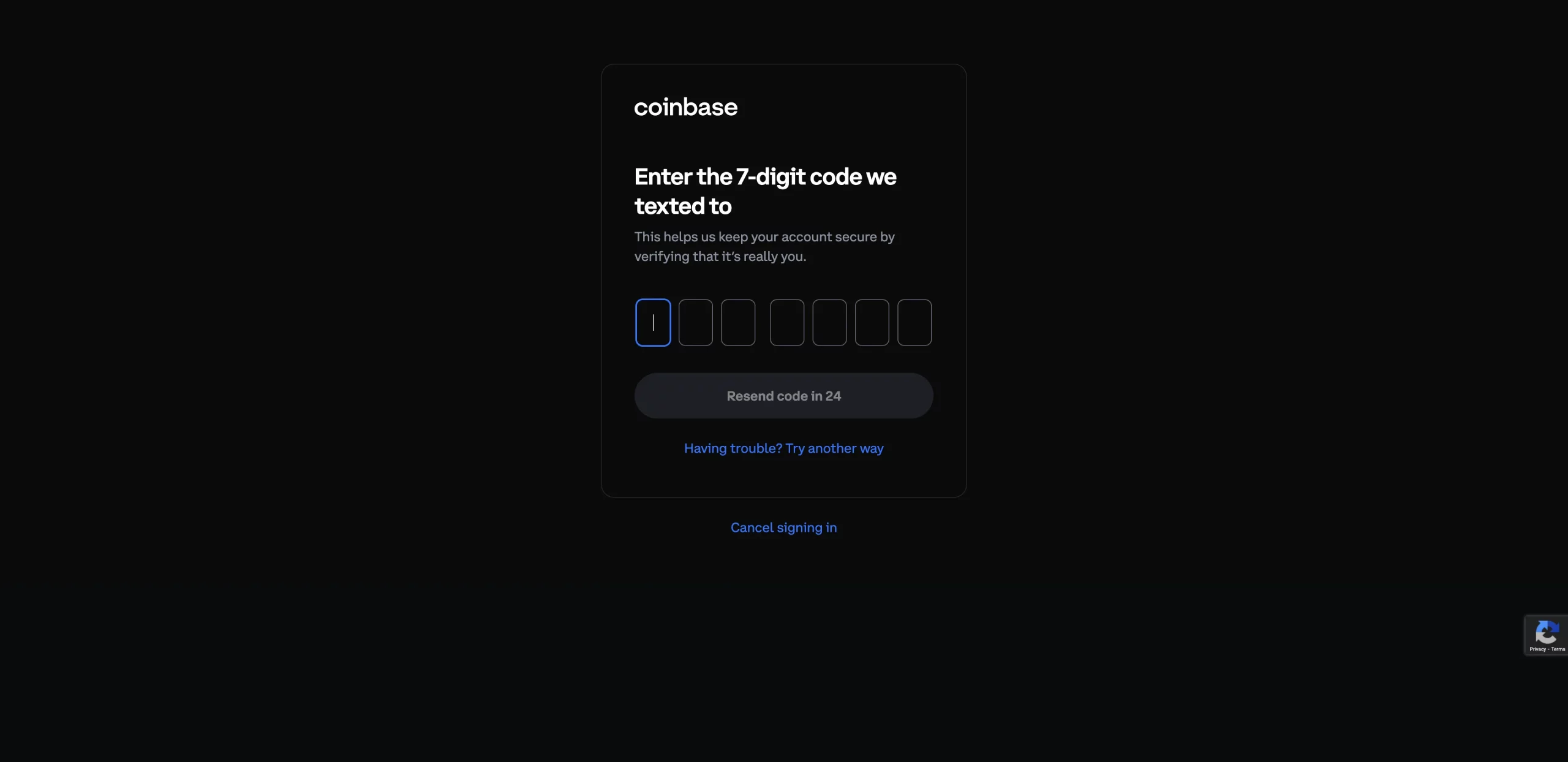
Afterward, you will be able to navigate through the Coinbase dashboard.
Step 2: Go to “Reports”
Once you are logged into your Coinbase account, you can click on the account icon that you will find in the upper right corner of the screen.
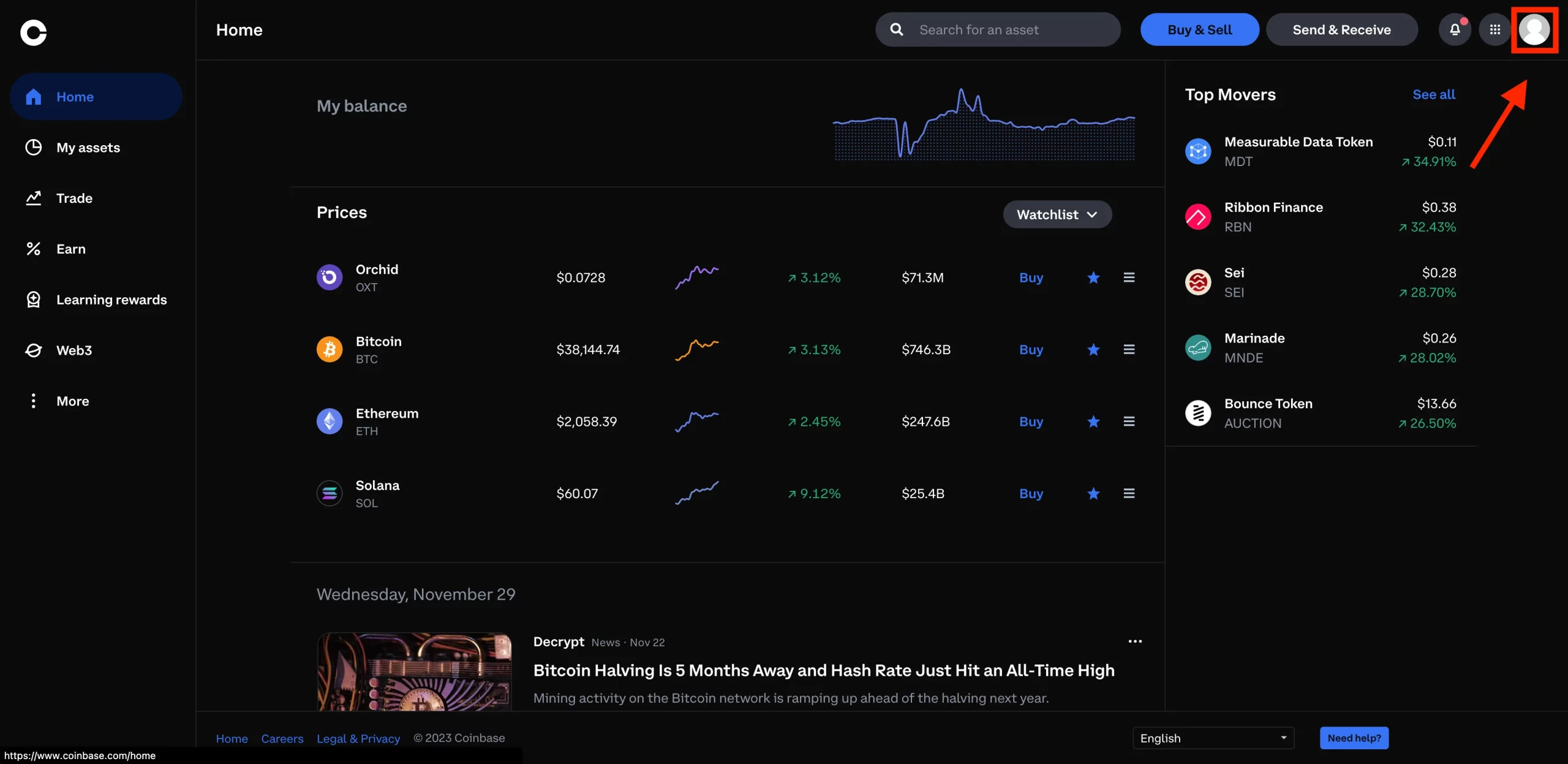
Afterward, you will see multiple options, including “Reports.” Click on that.

Step 3: Generate Coinbase Transaction History Report
After you reach the “Reports” page, things get even easier. You will see a section where Coinbase offers information regarding the transaction history, and in the right part, you will see the “Generate report” button. Click on that.
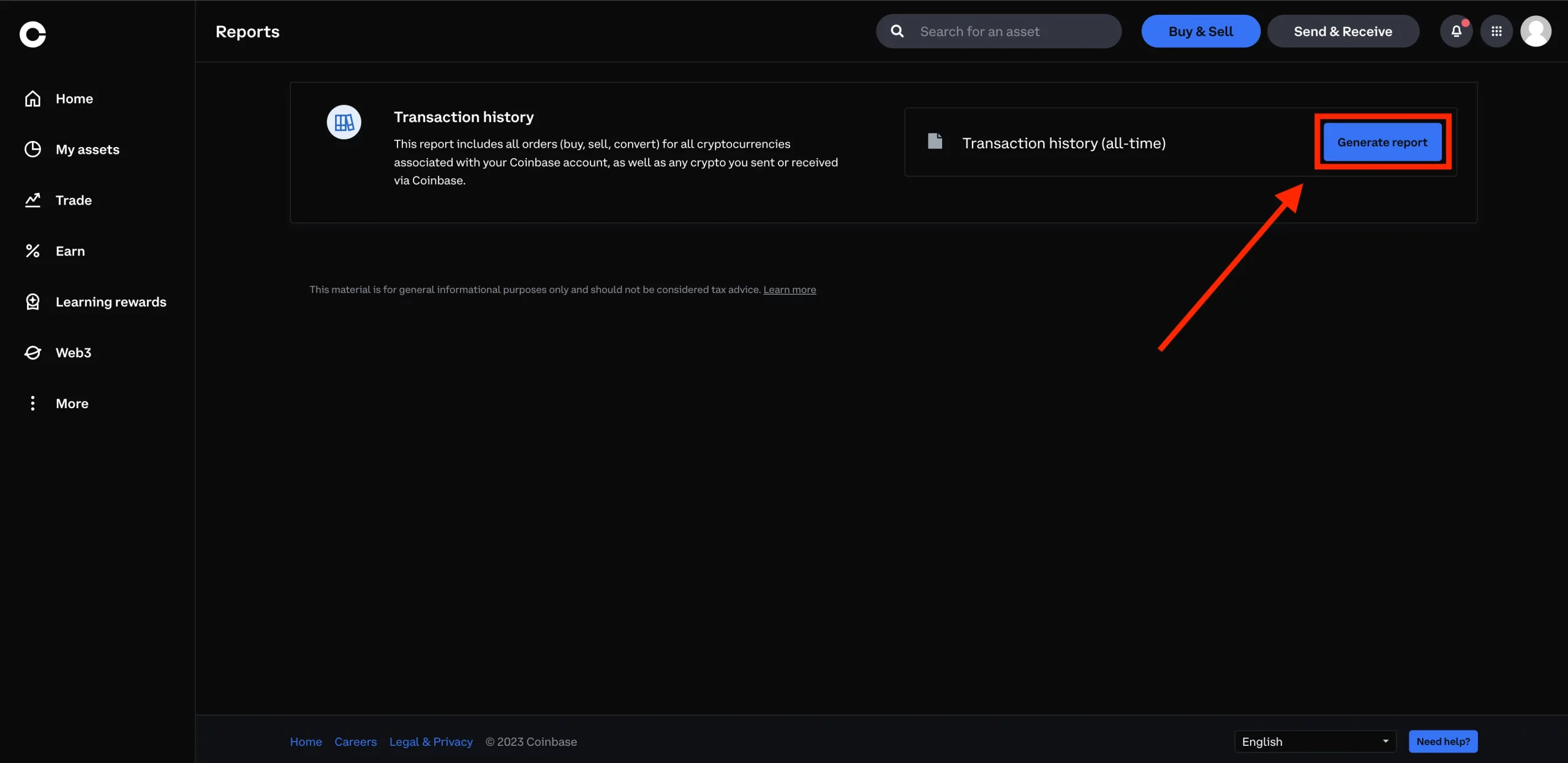
Afterward, you will be able to download your report for a set period of time. You can choose to add every Coinbase transaction you have ever completed or just some past transactions.
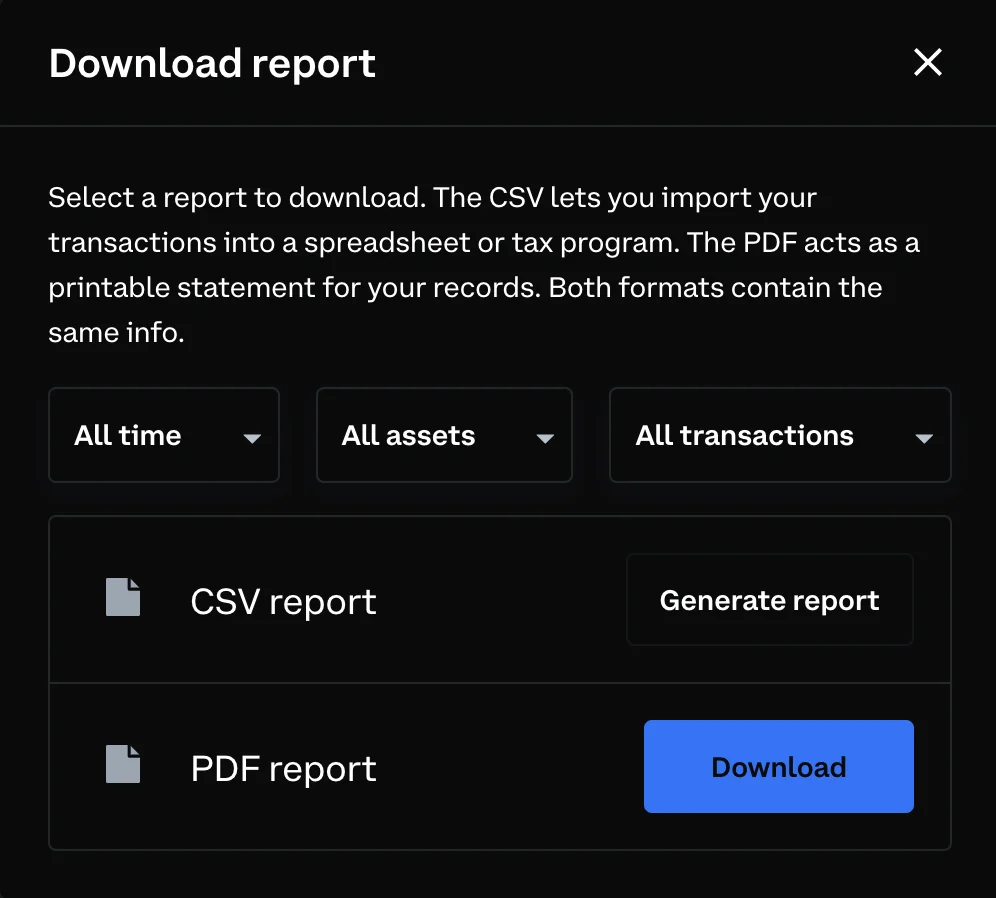
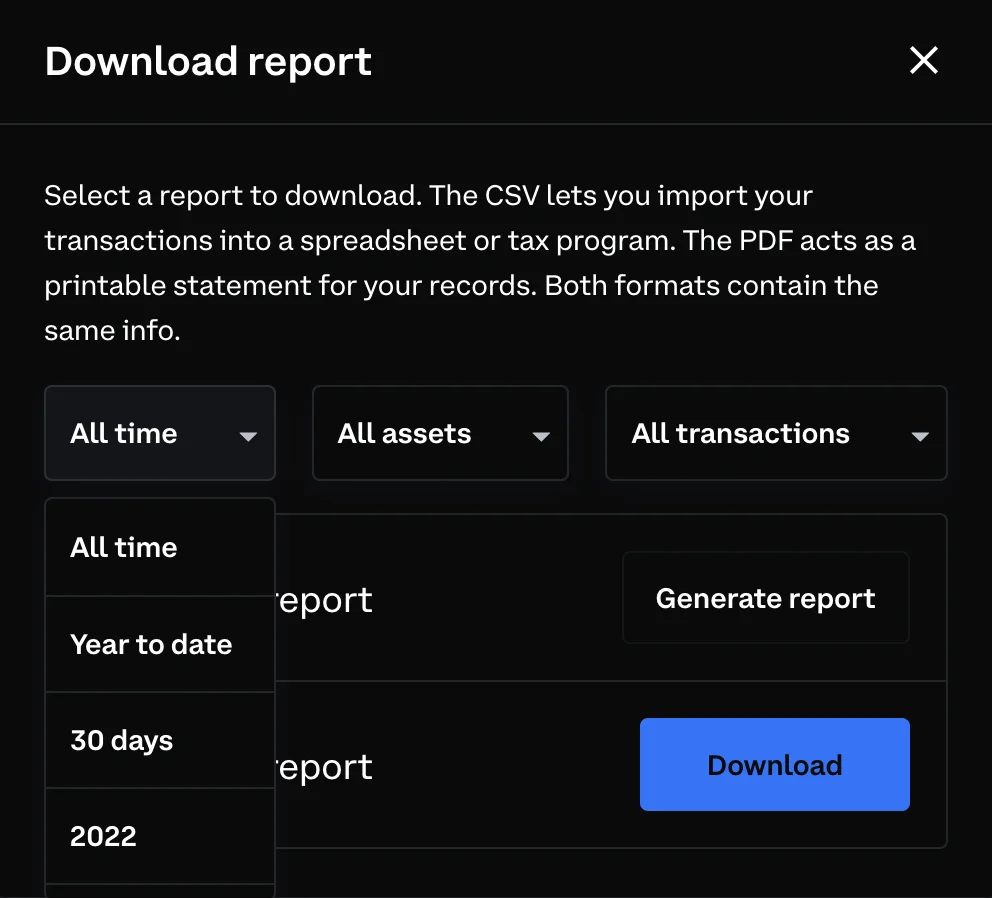
You can also select specific cryptocurrencies you want to include or various types of transactions (buy, sell, convert, Advanced Trade Fill, Send, Receive, Rewards Income, Learning Reward).

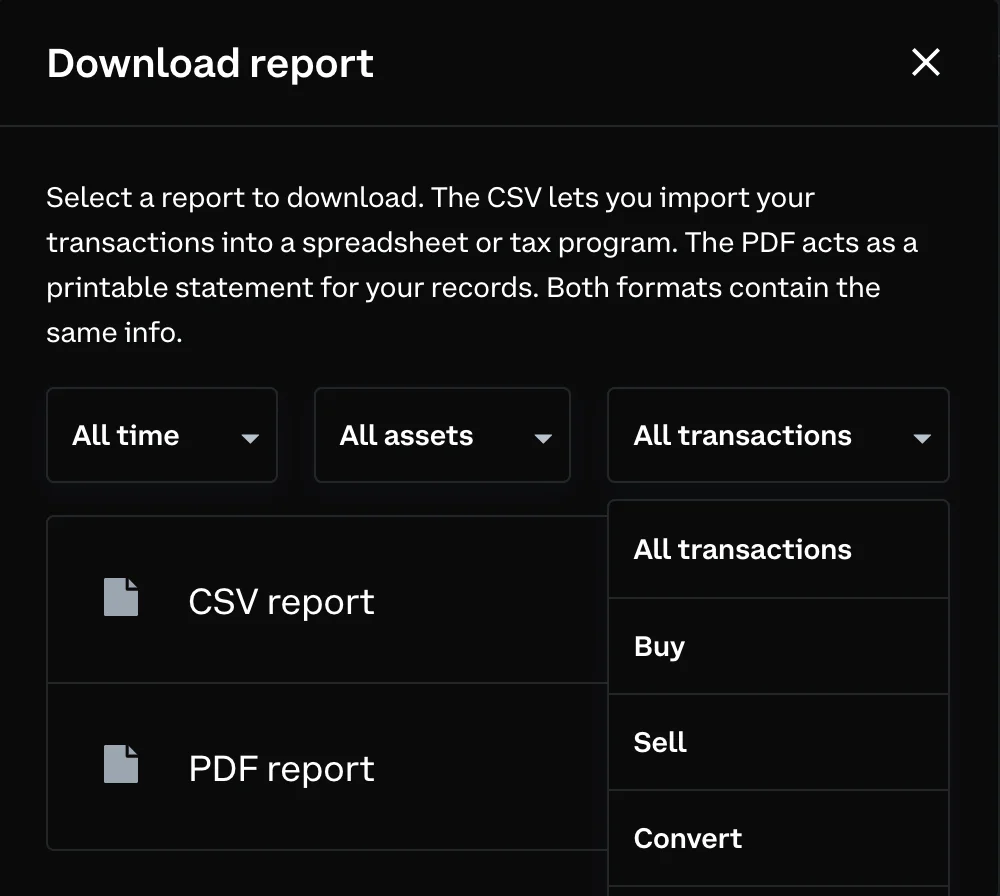
After you select the period, cryptocurrencies, and transactions you want to include in your Coinbase transaction history, it is time to generate the Coinbase transaction report and download it. You can generate CVS or PDF reports. Just click on “Generate report.”

Then, you can click on the “Download” button.
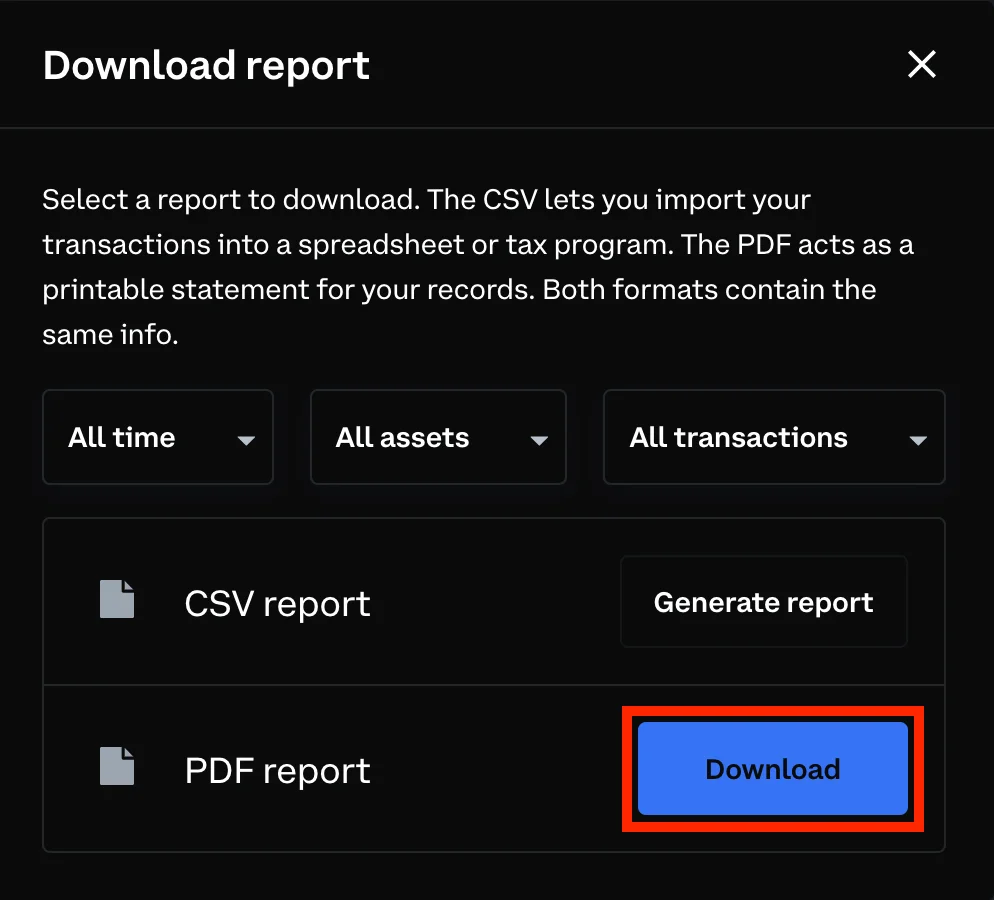
Once you download your transaction history, you can check it and keep track of how you traded crypto in the past.
FAQ
Does Coinbase track transactions?
Coinbase is a regulated company and a centralized exchange, so every transaction you complete on the platform can be tracked. However, you can keep your assets safe at any time.
How do I export the entire transaction history from Coinbase?
You have to go to the “Reports” page, click on “Generate report,” and select the transactions you want to include in the report (by period, cryptocurrency, and type of transactions). You might need it if you want to check more recent transactions or even transactions for all the assets. Then, you can click on “Download.”
Can I see the Coinbase deposit history?
Yes, you can check the Coinbase deposit and withdrawal history. All you have to do is go to “Portfolios.”
Can you check a Coinbase transaction status?
You can check the transaction status by clicking on the transaction details page.
In Conclusion
If you want to check your transaction history on Coinbase, finding it could not be easier. All you have to do is go to “Reports” and generate a new purchase history. That’s why Coinbase is still one of the top cryptocurrency exchanges, with over 100 million active users worldwide, offering plenty of valuable features and strong security.
Furthermore, numerous new users are continuously choosing the platform as it is easy to use and extremely accessible, considering that you can trade crypto on the Coinbase mobile app.


